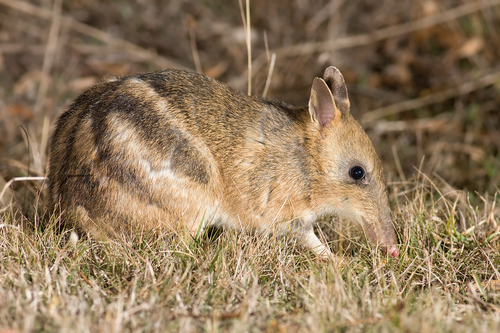
Eastern Barred Bandicoot
With its signature stripes and nocturnal lifestyle, the Eastern Barred Bandicoot is a crucial ecosystem engineer. By digging for insects, it aerates the soil, promoting plant growth. Native to Australia and Tasmania, this small marsupial embodies resilience and ecological importance in its natural grassland habitats.
Brown, Grey, Black, White
Color
91-152 days
Age of Sexual Maturity
50 days
Age of Weaning
12 mph
Top Speed
Vulnerable
Conservation Status
Decreasing
Population Trend
Characteristics
The Eastern Barred Bandicoot (Perameles gunnii) is a small marsupial native to southeastern Australia and Tasmania. It has a distinctive with three or four dark stripes on its hindquarters. This nocturnal forager thrives in grasslands, feeding on insects and plants, and plays a vital role in soil health through its digging habits.
Distribution Range of the Eastern Barred Bandicoot
Perameles gunnii, commonly known as the Eastern Barred Bandicoot, is native to Australia. Specifically, it is found in the southeastern parts of the continent, primarily in the states of Victoria and Tasmania.
Eastern Barred Bandicoot's Habitat
Environmental Conditions
The Eastern Barred Bandicoot inhabits grasslands and open woodlands. It prefers habitats with a mix of native grasses and shrubs, providing adequate cover and food resources. The climate in these regions is temperate, with moderate rainfall and distinct seasonal variations.
Ecological Niche
Perameles gunnii is primarily nocturnal and feeds on a variety of invertebrates, such as insects and earthworms, as well as plant material. It plays a role in soil aeration and seed dispersal through its foraging activities, contributing to the ecosystem's health. This species has adapted to survive in environments that are often subject to human alteration, although its population is vulnerable to habitat loss and predation by introduced species.
Copyright @ Nature Style Limited. All Rights Reserved.
 English
English